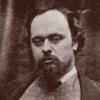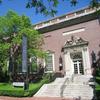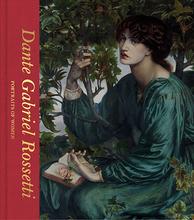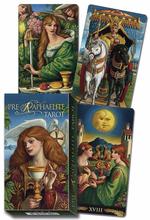More about The Twig
- All
- Info
- Shop

Sr. Contributor
Rossetti leaves the world guessing as to the mystery lady depicted in The Twig.
The actual title of this work is Il Ramoscello which is Italian for “The Twig.” We’re guessing this is a reference to the acorns/oak branch the model is holding and not the model herself. No, women in 1865 didn’t just sit around staring into space and holding acorns for no reason. Yes, the acorn is likely used to as a symbol. In Celtic legends, Thor used an oak tree to hide from a thunderstorm and thus placing an acorn on your windowsill brings good luck to the home and safety from lightning. Is this woman the victim of multiple lightning strikes? More likely she is holding this twig as a representation of the strength and preservation of the home that her femininity embodies.
Naturally your next question will be, why, besides her obvious good looks, is this woman such a good representation of femininity? We can’t be positive since we’re not 100% sure who this woman is. The original title of the piece was Bella e Buona, which translates to “nice and good” or “beautiful and good” so we know that the sitter was, as is common in Rossetti paintings, an idealization. It’s unclear, however, if the model used was Amelia “Amy” Graham, daughter of William Graham the wealthy Scottish politician, businessman and Pre-Raphaelite patron who commissioned the piece. It’s definitely supposed to be Amy, but it looks an awful lot like Alexa Wilding, a young model Rossetti had discovered the year this was commissioned. Alexa stands out as one of the few models who didn’t sleep with the Rossetti, which may be why she had a reputation for being boring. Even Graham’s daughter referred to the piece as just “a girl standing against a background” lending definite credibility to the theory that this is not Amy.
In 1873, Rossetti took the painting back to make alterations but we don’t know why. It may have something to do with it being a “double work” or painting connected to a poem by the same name. Bella e Buona was a lyrical and corny poem (one line reads “So my lady, so my lovely love”) and in 1870 Rossetti changed the title to Plighted Promise. This eliminated the painting’s double work status and possibly inspired the desire to change its title. The changes Rossetti made to the painting are unclear because Graham hated them all. Once the painting was returned Graham had another artist remove all of the changes except for the new title Il Ramoscello.
The Twig now lives at the Fogg Art Museum as part of the Winthrop collection. Winthrop bought the piece at auction in 1926 and upon his death donated it and 4,000 pieces to the Fogg. It remains the single largest art donation given to a college. Edith Wharton said of the ill-tempered Winthrop, “he seems to me to want digging out and airing.”













